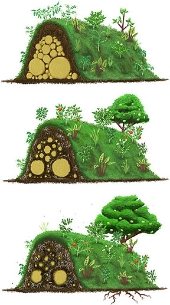Hello, I've been perusing this forum extensively and watching a lot of Sepp Holzer videos to help figure out the vexing issue of late blooming fruit trees. I live in Goldendale, Washington at 2700' elevation and have used this handy chart provided by Washington State University to help assess why my fruit trees are not actually fruiting after bloom:
https://extension.usu.edu/productionhort/fruit/tree/CriticalTemperaturesFrostDamageFruitTrees.pdf .
Our fruit trees, in general, will break bud in late March, early April and by May be flowering and ready to pollinate. In May, we are subject to late frosts breaking that 32 degree Fahrenheit mark that will damage the bloom. I would like to create microclimates in my garden to somehow help the tree survive and stay above that 32 degree Fahrenheit mark. Three ideas that have stood out to me:
1. Pouring boiling water into a bucket assigned to each tree. However, this is quite an endeavor and energy expenditure for 30+ fruit trees.
2. Using stones as a heat sink for each tree and hoping and praying they release enough heat at night to keep the trees immediate area above 32 degrees Fahrenheit.
3. Using small ponds and/or other bodies of water to reflect heat and hold and release heat.
Number 3 seems the most intriguing at this time. My question is, is there a formula for this? What I mean is, how big should the pond be? How deep should it be? Should there be a specific position of the pond in relation to the tree in order to absorb and release the heat in the most effective manner? I know Sepp Holzer uses a similar method, but again, it's very esoteric so having a concrete example would be quite helpful. I appreciate all you wiseheads and your extensive knowledge on these subjects. Thank you!









